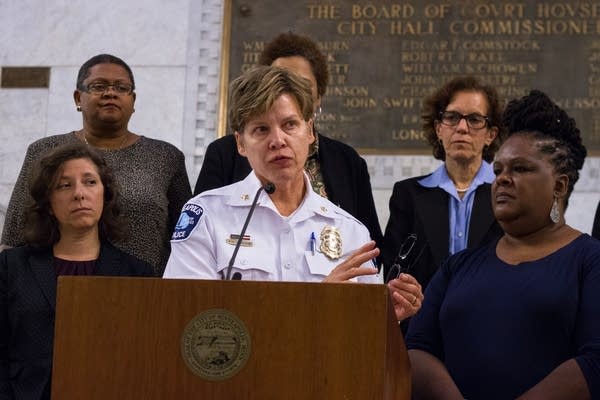A look at Minneapolis' sex trafficking market

A new report detailing sex trafficking of minors in Minnesota was released last week, indicating a continuing problem in the state.
The report, "Mapping the Market for Sex With Trafficked Minor Girls in Minneapolis," was funded by the Women's Foundation of Minnesota and the University of Minnesota Children, Youth & Family Consortium.
MPR News pulled out some key findings from the research:
Create a More Connected Minnesota
MPR News is your trusted resource for the news you need. With your support, MPR News brings accessible, courageous journalism and authentic conversation to everyone - free of paywalls and barriers. Your gift makes a difference.
• Girls ranged in age from 9 to 17.
• The average age of a trafficked girl in the study was 15.
• Roughly one third of the victims in MPD cases were runaways. Other risk factors included homelessness, drug/alcohol use, past child abuse or neglect, and being a pregnant or parenting teen.
• Pimps and victims generally came from high-poverty neighborhoods and were disproportionately people of color.
• Recruitment locations were primarily clustered in downtown Minneapolis, the Phillips Neighborhood of South Minneapolis, and in North Minneapolis.
• Recruitment happened at schools, libraries, juvenile detention centers, parks, public transit, shelters, malls and abandoned buildings.
More from the report:
We found a tremendous amount of evidence that operations employ systematic psychological, physical, and sexual brutality to develop a "product," which is girls to sell. We found that securing a supply of girls through cultivating romantic interest, followed by the use of sexual, physical, psychological, and verbal violence, is neither random nor anomalous on the part of facilitators. Rather, this is a standardized conditioning process designed to first entrap girls and then break them down so they will not resist. It includes a highly strategic use of rape and gang rape as a conditioning and sorting-out process.
On The Daily Circuit, we look at what the state is doing to prevent the sex trafficking of minors.
The full report: